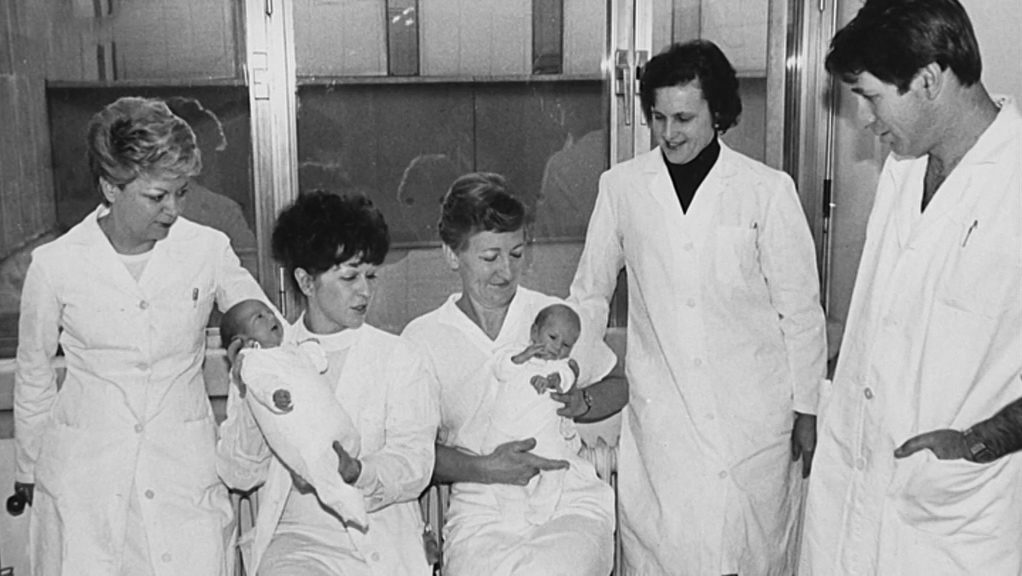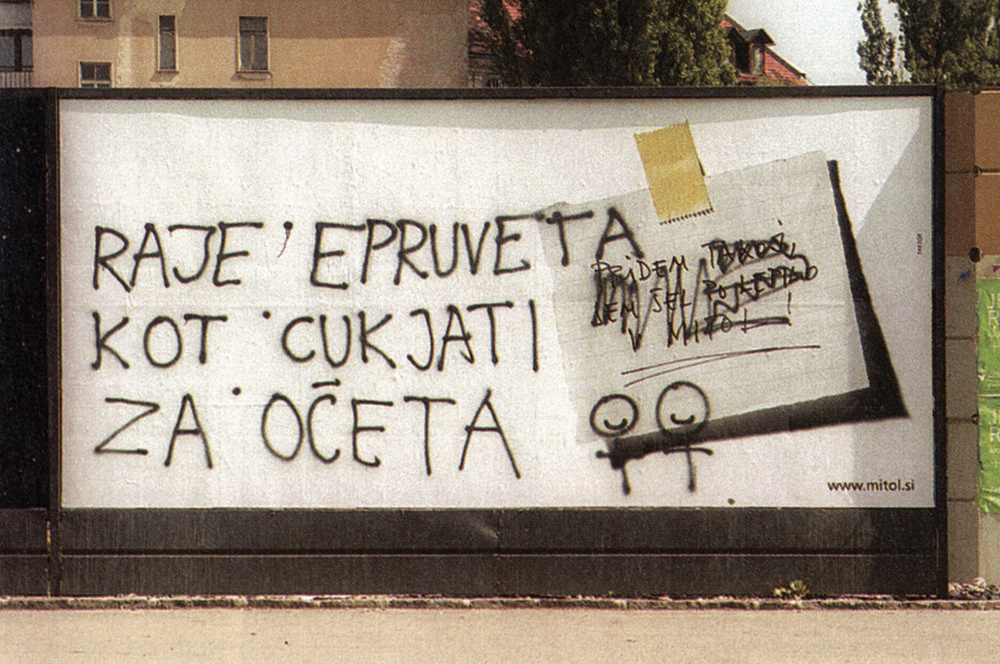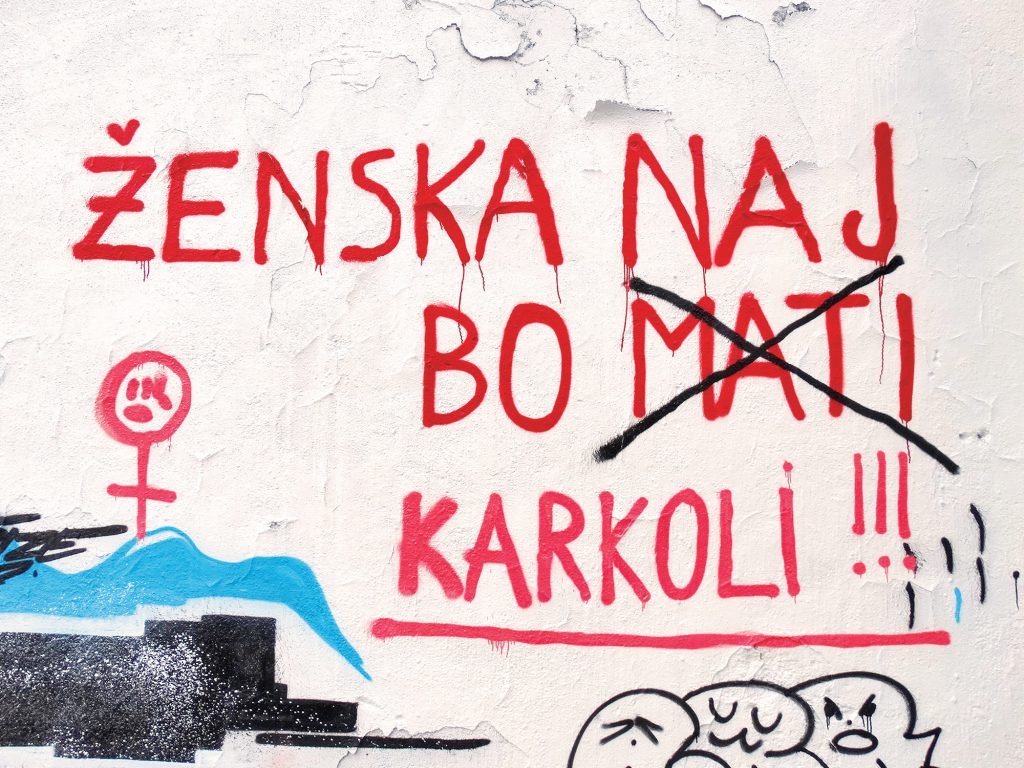
ARTIFICIAL INSEMINATION AND PARENTHOOD
In vitro fertilisation (IVF) is a method of artificial insemination in which male and female gametes are united outside the body. In 1983, the Gynaecological Clinic in Ljubljana was among the first clinics in the world to successfully carry out IVF insemination and thus set a new milestone in reproductive medicine. The first pregnancy occurred in the first year of the work of the Clinic, and in 1984, the first twin baby girls conceived with the IVF procedure were born. Today, Slovenia is the leading country in the world in this field and primarily boasts good access to artificial insemination procedures for heterosexual couples who face infertility. Each year, five per cent or almost a thousand children are conceived through artificial insemination.
In Slovenia, artificial insemination was first regulated by the Health Measures in Exercising Freedom of Choice in Childbearing Act which was adopted in 1977. In 1994, due to insufficient legislative grounds, gynaecological clinics stopped the procedures of insemination with the donor semen. To eliminate irregularities, in 1999, the proposed Infertility Treatment and Procedures of Biomedically-Assisted Procreation Act was submitted to legislative procedure. The proposed Act included the controversial provision that only limited the right to artificial insemination to women who are in a marital or cohabiting relationship with men. At that time, a group of members of parliament attempted to eliminate the discriminatory limitation by proposing an amendment to the Act by which the right to artificial insemination would be extended to all women, as the Act from 1977 had already stipulated. However, in July 2000, the new centre-right government rejected the amendment and adopted the proposed Act. Soon after, the newly elected liberal government proposed a new amendment which would again enable access to artificial insemination to all women regardless of their marital status or sexual orientation. The amendment was adopted by the National Assembly in April 2001 using a fast-track procedure but the right-wing parties succeeded in attaining the call for a subsequent legislative referendum that took place on June 17, 2001. Immediately following the call for the referendum, a wide civil initiative, called The Committee for the Freedom of Choice, was organised to help support the Act that would enable artificial insemination for all women. Despite its extraordinary engagement, the amendment to the Act was rejected at the referendum, with 35.6% of voter turnout. Since 2001, the discriminatory Act in force only allows artificial insemination to women in heterosexual relationships. In the past twenty years, there were at least four initiatives for the constitutional review of the Act in force, which were all dismissed by the Constitutional Court with a more or less formal argumentation.
Today, the question of motherhood is still the question of the understanding of the role of women in society. There is a prevalent idea of motherhood as something natural, normal, self-understood and inevitable, due to which women in private and public spaces face the expectation to have children, while the woman’s decision not to be a mother is often met with reservation and stigma. This kind of social pressure is inadmissible: what women do with their bodies is their autonomous decision, while future parents’ or carers’ taking the best care of the quality life of their children regards both their own understanding as well as public policies that can either support or hinder parenthood. This is why the Slovenian Constitution in its Article 55 not only guarantees the freedom of choice in childbearing but also lays down that the state shall create conditions that will enable people to decide to have children in the first place.
Leja Markelj



SOURCES:
- Beti Burger, »Kdaj boš pa ti imela otroka?« [»And when will you have a child«?]. Delo Daily, October 29, 2023. https://www.delo.si/novice/slovenija/kdaj-bos-pa-ti-imela-otroka/.
- Ana Kralj, Tanja Rener, Vesna Leskošek [et al.], Abortion and Reproductive Rights in Slovenia: A Case of Resistance (Abingdon and New York: Routledge, 2024).
- Marko Jug (ed.), Interno: Interni časopis Univerzitetnega kliničnega centra Ljubljana ed. [Interno: Internal Journal of the University Medical Centre Ljubljana March 2023, No. 01., (Ljubljana: University Medical Centre, 2023).
- Metka Mencin, »Svobodna.si«, Spol.si, June 14, 2021. https://spol.si/blog/2021/06/14/svobodna-si/.
RECOMMENDED SOURCES:
- Video 40 let postopkov zunajtelesne oploditve na Ginekološki kliniki v Ljubljani: https://www.youtube.com/watch?v=0HVExev2fyQ&ab_channel=UKCLjubljana
- Ann Oakley, Gospodinja [Housewife] (Ljubljana: Založba /*cf Publishing House, 2000).
- Alenka Švab, Družina: od modernosti k postmodernosti [Family: from Modernity to Post-modernity] (Ljubljana: Scientific and Publicity Centre Publishing House, 2001).